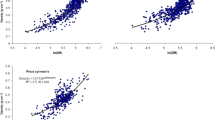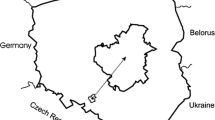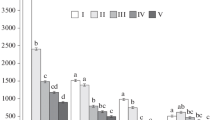Abstract
The accumulation and decomposition of coarse woody debris (CWD) are processes that affect habitat, soil structure and organic matter inputs, and energy and nutrient flows in forest ecosystems. Natural disturbances such as fires typically produce large quantities of CWD as trees fall and break, whereas human disturbances such as timber harvesting remove much of the CWD. Our objective was to compare the amount of CWD removed and left behind after clear-cutting to the amount consumed and left behind after natural fires in Rocky Mountain lodgepole pine. The masses of fallen logs, dead-standing trees, stumps, and root crowns more than 7.5 cm in diameter were estimated in clear-cut and intact lodgepole pine forests in Wyoming and compared to estimates made in burned and unburned stands in Yellowstone National Park (YNP), where no timber harvesting has occurred. Estimates of downed CWD consumed or converted to charcoal during an intense crown fire were also made in YNP. No significant differences in biomass of downed CWD more than 7.5 cm in diameter were detected between burned stands and those following a single clear-cut. However, the total mass of downed CWD plus the mass of snags that will become CWD was nearly twice as high in burned stands than in clear-cuts. In YNP, approximately 8% of the downed CWD was consumed by fire and an additional 8% was converted to charcoal, for an estimated loss of about 16%. In contrast, approximately four times more wood (70%) was removed by clear-cutting. Considering all CWD more than 7.5 cm in diameter that was either still present in the stand or removed by harvesting, slash treatment, or burning, clear-cut stands lost an average of 80 Mg ha−1 whereas stands that burned gained an average of 95 Mg ha−1. Some CWD remains as slash and stumps left behind after harvesting, but stands subjected to repeated harvesting will have forest floor and surface soil characteristics that are beyond the historic range of variability of naturally developing stands.
Similar content being viewed by others
Author information
Authors and Affiliations
Additional information
Received 16 November 1999; Accepted 31 May 2000.
Rights and permissions
About this article
Cite this article
Tinker, D., Knight, D. Coarse Woody Debris following Fire and Logging in Wyoming Lodgepole Pine Forests. Ecosystems 3, 472–483 (2000). https://doi.org/10.1007/s100210000041
Issue Date:
DOI: https://doi.org/10.1007/s100210000041




